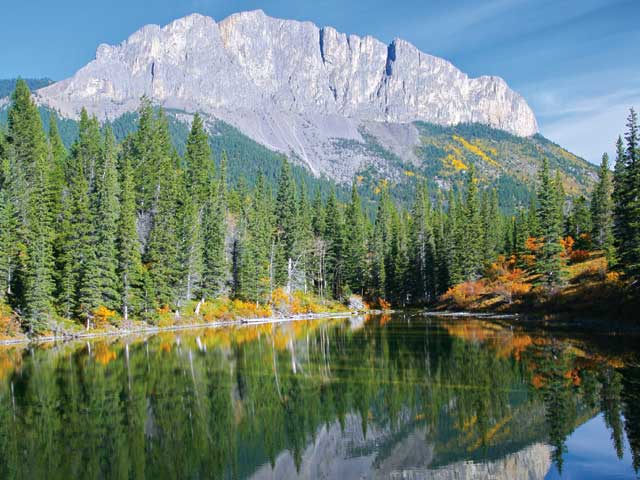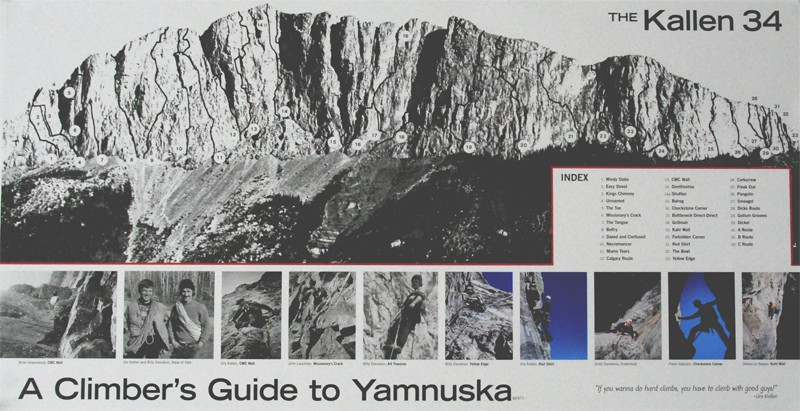Yamnuska Reopens After Death, Here are Some Dangers
And 10 things to remember when heading to the mountains

Yamnuska can be a dangerous place if the hazards and not understand and respected. Climbers in the 1960s constructed a rescue hut beneath where the CMC Wall 5.11c is now because climbers were often getting injured or killed. The hut was destroyed by ice-fall in the 1970s.
Over this past weekend, a 30-year-old hiker from Calgary died on the scree slope after he stumbled and then was hit in the head by a falling rock. Two other rescues took place on Yamnuska on the same day. Officials closed the area on July 12, but have now reopened it to hikers and climbers.
In 2017, Kananaskis Country Public Safety reported: “We can’t help but notice a pattern developing in our local Bow Valley mountains. In the last week we’ve been called to assist with 19 hikers!! Yamnuska, EEOR, and Ha Ling have all managed to stump new hikers and cause a rash of 911 calls.” Having a lot of rescues isn’t new to 2020, but the increase in trail-use is way up over the past few years.
Top climber Will Gadd recently said: “The mountains around Canmore are busier than I have ever seen them. If you’re thinking of heading toward Spray Lakes you’ll need to allow extra time, and it was about gridlocked coming home yesterday on the Smith Dorien. It’s like someone threw a switch and thousands of people got stoked on being outside. Fundamentally this is great, but we’re going to go through some pains. Yam is now closed after a series of accidents (investigations perhaps?), it’s just mayhem out there. Allow for extra time and plan your travel times like its California or you will be in deep…”
A number of experienced climbers have died on Yamnuska over the past 50 years, most from taking a lead fall. In 2018, Kevin Ross of Cochrane died after taking a lead fall and having his only lead rope cut on a sharp edge. In 2011, Canmore local 5.13 climber Akihira Tawara died after falling while free-soloing Directissima 5.8. While it’s not clear why Tawara fell, most climbers believe it was due to broken holds.
Dangers to Rock Climbers
Loose rock: Despite being a go-to wall for climbers with over 100 routes up to 350 metres from 5.5 to 5.14a, with old-school trad and modern sport, Yamnuska still has a lot of loose rock on ledges, loose holds and loose choc-stones in chimneys.
Route-finding: The old saying on limestone is that if you can’t go up, just go sideways. Many routes on Yamnuska have long, unprotectable traverses or follows hard-to-find features. If you’re not an ace at navigating a sea of rock then practice before you visit.
Run-outs: Some classic routes have 10-metre run-outs, and most have at least a few sections of two- or three-metre run-outs. If you don’t have a solid head for run-out climbing on loose rock, best to start on the low grades and learn how the mountain is put together.
Hard to bail: Rappelling is easier now than 20 years ago thanks to the addition of ring bolts on many routes, but some climbs are impossible to bail from safely.
Rockfall: Whether it’s from your climbing team, one above, or just natural, there’s a lot of rockfall on Yamnuska. Wear a helmet and be prepared to call “rock” for those below.
Weather: Electrical storms and even summer hail can create complicated climbing situations.
Related: That Time Lightning Stuck Us on Yamnuska
Dangers to Hikers
Exposed cliff sections: The hiking trail isn’t that difficult, but some sections follow ledges above steep cliffs where a fall would be deadly.
The descent: The descent of Yamnuska used to be better and more fun than it is now. Most hikers would scree-ski down the huge scree slope. However, after decades of use, a lot of the “soft” scree has been pushed to the bottom of the slope. Finding the best line takes a skilled eye.
Slips: If you slip on the trail up or down, you can twist an ankle, knee or take a tumble. If you fall running down the scree, you could tomahawk and end up very injured.
Weather: Freak storms can create slippery trails and lightning.
10 Things to Keep in Mind in the Mountains
1. Start small and work up to bigger objectives.
2. Bring the right amount of gear/water/food/clothing.
3. Bring a map, study a topo and pre-plan your day.
4. Don’t rock climb beneath other parties.
5. The top is only half-way through your day.
6. As the days get shorter, time things appropriately.
7. If you see someone doing something stupid, call them out.
8. Have a plan B and C in case someone is on your route or you don’t have the time.
9. Don’t go alone unless you know the way up and down.
10. Remember that mountains are dangerous places.



